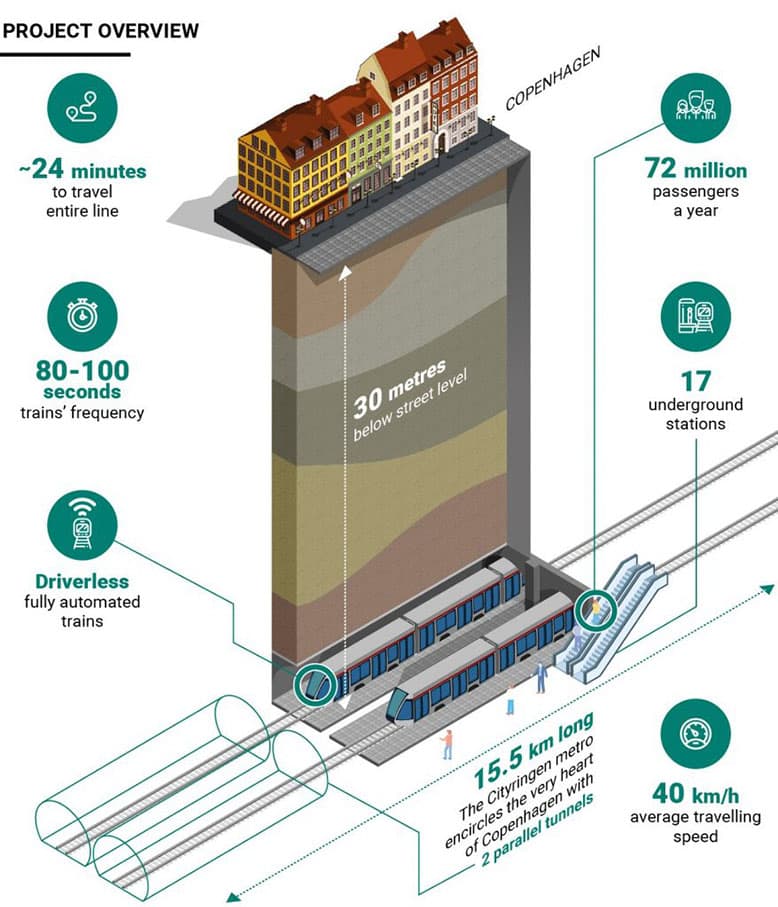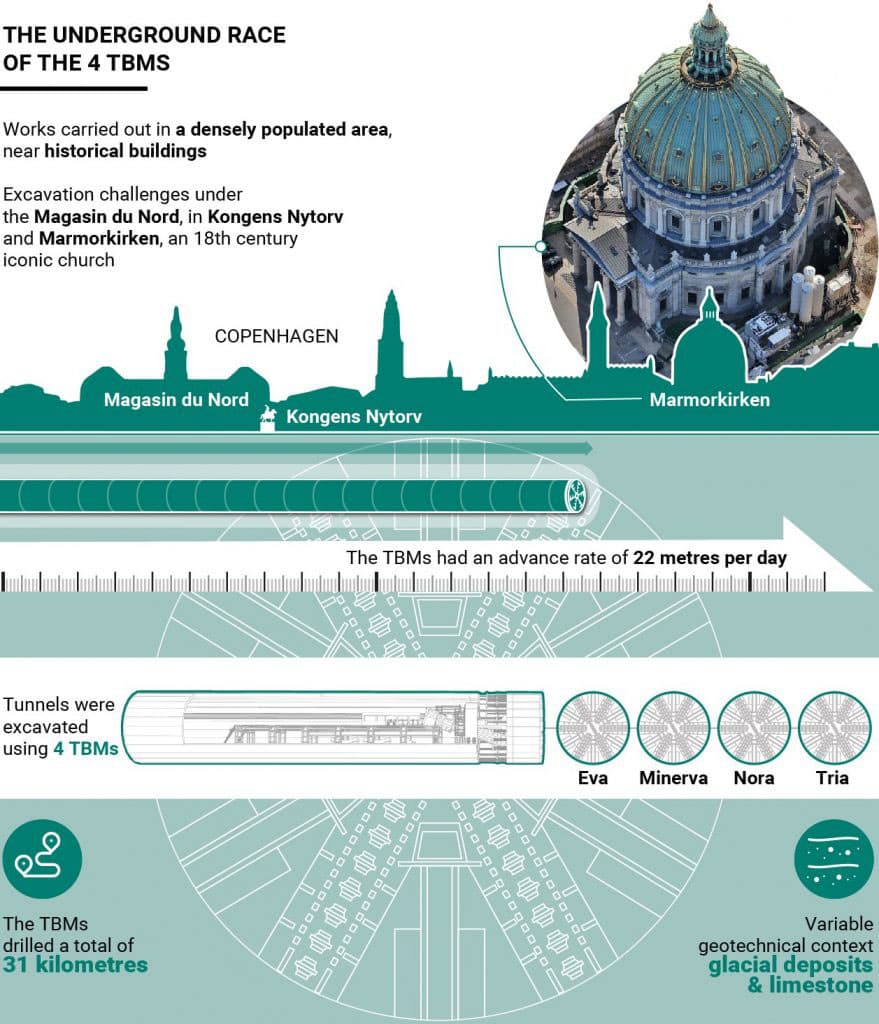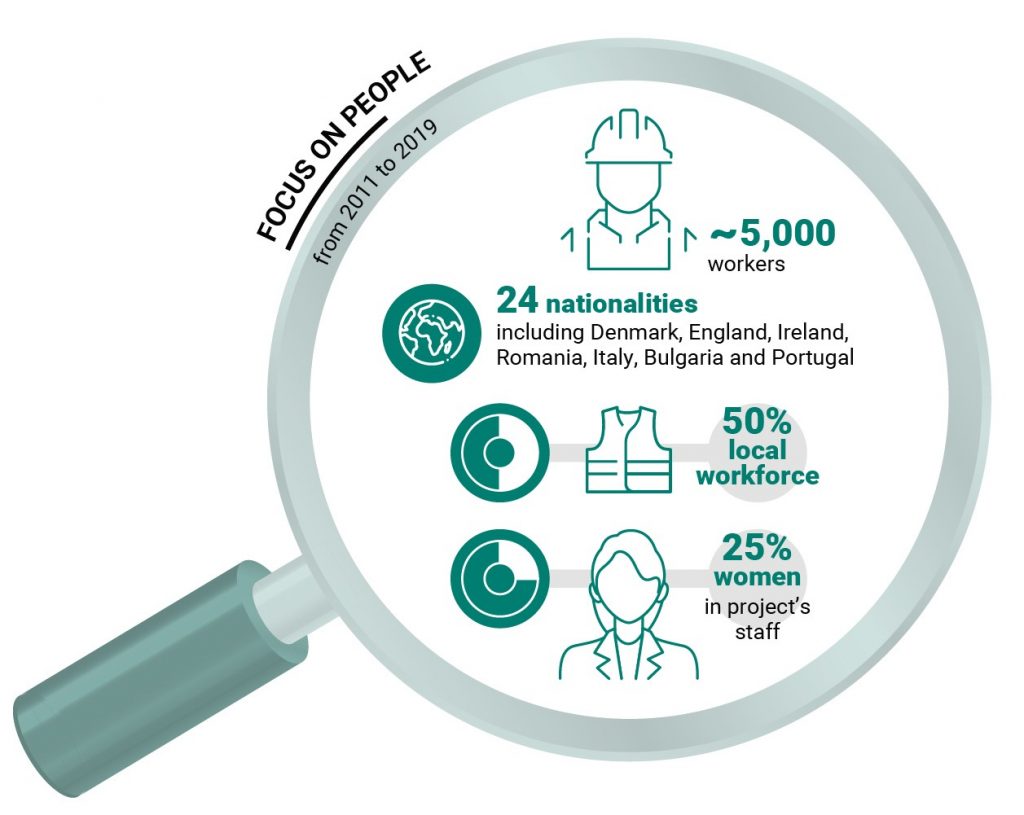
Cityringen, the new metro line that encircles the historic centre of Copenhagen, is complete.
Copenhagen Metro Team (CMT) of the Salini Impregilo Group delivered the project to the city in a little more than eight years, faster than the European average for a project of its kind.
The metro line, which is scheduled to be inaugurated at the end of September, will significantly improve public transport in the Danish capital. Along the 15.5 kilometres of parallel track, driverless trains will carry up to 240,000 passengers a day, or up to 72 million a year. Among the 17 stations strategically located around the centre, the trains will travel at average of 30 metres below street level.
As the latest addition to the city’s expansive public transport system, the service will provide residents with a train or metro station no more than 600 metres from their home.

The city becomes smaller
Cityringen not only encircles the city centre but also connects with existing metro lines at stations like Kongens Nytorv and Frederiksberg. It also links up to regional rail stations Copenhagen Central, Østerport and Nørrebro.
Once aboard one of the two trains that travel in opposite directions along the parallel tunnels, the journey is quick and the frequency is high. A full journey takes 24 minutes. Travel between stations is just as quick. It takes seven minutes between Nørrebro Runddel and Enghave Plads; six between Nørrebro station and Trianglen; and eight between Poul Henningsens Plads and Rådhuspladsen.


Sustainability and inclusion
Some 5,000 people from 24 nationalities worked on Cityringen. Half of them were locals and a quarter of them women.
This inclusion was one of the key characteristics of the project in addition to sustainability and community involvement.
To protect the environment, 5,000 hours were dedicated to planning and supervising the work.
As for the excavations themselves, about 250,000 tonnes of contaminated soil were treated and removed from the stations and shafts.
Community involvement was also encouraged, especially in the neighbourhoods near the construction sites. During the more than eight years of construction, 40 public events were organised at which more than 65,000 people took part.
Safe work sites
Cityringen will also be known for the priority it gave to the health and safety of its workers. Last year, one million hours were recorded without accident, some five times less than the Danish average.
Cityringen was also an opportunity to bring more light to the city’s history. Archaeologists at the Museum of Copenhagen called it the «greatest archaeological excavation in Northern Europe». Between 2010 and 2013, many archaeological digs were conducted at works sites throughout the city, in particular Gammel Strand and Kongens Nytory and Radhusplads.
Relics, artefacts and other discoveries were donated to the Museum, helping to reconstruct the history of Copenhagen.

